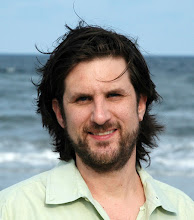"It is the brilliantly lit boulevard that can be seen, miniaturized and backward, reflected in the lenses of his goggles. It does not really exist. But right now, millions of people are walking up and down it." - Neal Stephenson, Snow Crash.A friend and colleague recommended that I write about Second Life, the virtual world "game" from Linden Labs. It's a great suggestion and an appropriate subject for the first game, other than the Wii, I've written about.
Second Life is a Blue game. Unlike most other games there's no real competition: users live in a virtual world, buying, selling, and interacting with one another and their surroundings. Users -- called residents -- trade goods and services using a currency called Linden Dollars. Millions of residents build and maintain their virtual world, then hang out in it. The game draws inspiration from Neal Stephenson's book Snow Crash, a classic for the geek crowd.
Like most other great BOS offerings Second Life took a giant gamble on their Eliminate, Reduce, and Create elements of the Four Actions Framework. Most other game developers were focused on tech innovation: raising key elements, at great cost, that held little consumer value. Linden's careful avoidance of this trap allowed them to focus. Despite that Second Life was released about the same time as many other virtual world systems -- including the Sims, which had a great brand name -- Linden's Second Life went on to render the competition irrelevant.
The key elements of Second Life seem obvious:
"Like any place in Reality, the Street is subject to development. Developers can build their own small streets feeding off of the main one. They can build buildings, parks, signs, as well as things that do not exist in Reality..." Neal Stephenson, Snow Crash.Eliminate control. Residents of Second Life create their own world: Linden exercises a light touch. Unless a resident has become hopelessly obnoxious they have residents work out their own differences. This has resulted in plenty of "content" -- there's no lack of places for people to traipse around about in Second Life. If individual residents find a place distasteful or dull, they just go somewhere else. Linden's policies have encouraged the market to create better content, and at far less cost, than an army of editors.
Reduce traditional game competition. There basically is none. Users can try to become rich, and there's even a method to convert Linden dollars into real money, and vice versa. But for the most part users work together to build a better world rather than trying to destroy a worse one.
Raise community. Community and camaraderie permeate everything in Second Life.
Create Linden dollars: a virtual economy. The Second Life economy is more than just the virtual money. Linden has created artificial scarcity. By doing so, Linden has created an emotion-fueled, vibrant, and apparently sustainable economy. People have tried to create artificial scarcity before, and they keep trying (look at the virtual gifts on Facebook and similar sites), but nobody has come anywhere close to the level that Linden has. Like all successful Create elements Linden used technology and ideas already in existence: e-commerce was alive and well when Second Life launched. But the technology was catalytic, not the centerpiece, used to unleash an entirely new way of doing things in Linden's virtual world.

No comments:
Post a Comment